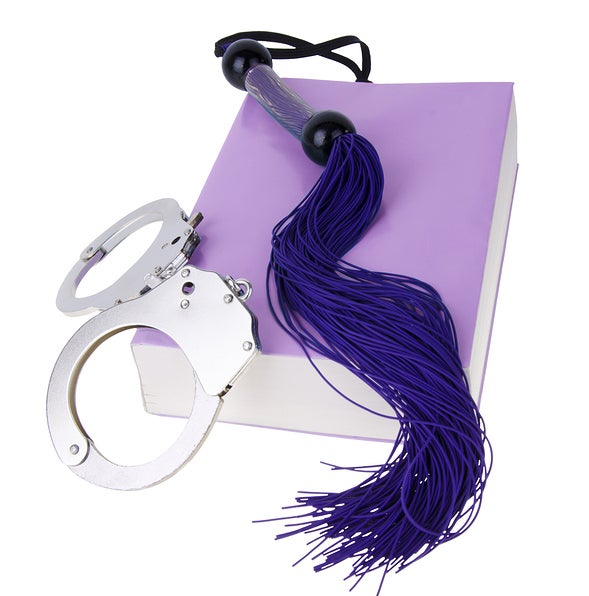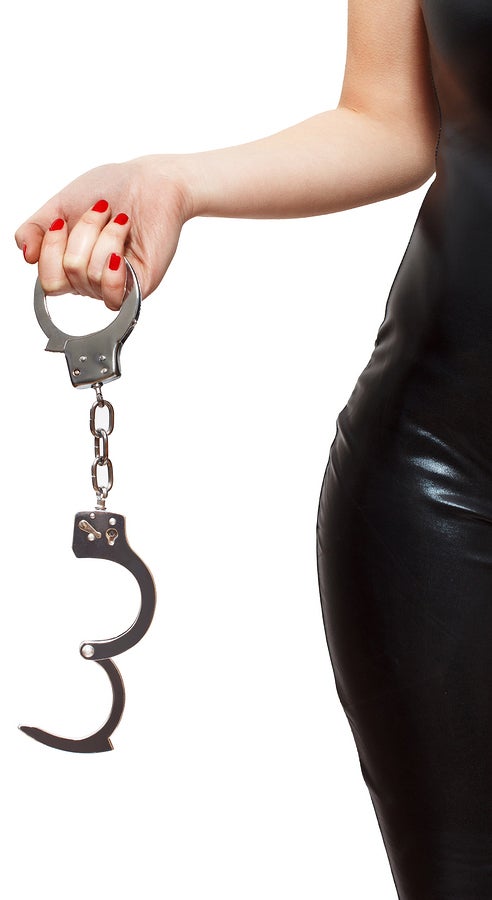50 Shades of Not-Okay: What the Book Got Wrong
Relationships
What was it that compelled over 100 million people to purchase British author E. L. James’s 2011 erotic romance novel? In a word – escape. Yet the book, its two sequels and the new film adaptation have caused an uproar within the BDSM community, as many feel the story incorrectly portrays the world of bondage.
What’s the number one bone of contention? Namely, consent (or rather, lack thereof) between the dominant Christian Grey and his curious sub, Anastasia. We’ll let the expert critics explain what they feel the books got wrong about the true world of bondage.
What did 50 Shades of Grey get wrong?
ASTROGLIDE’s Resident Sexologist and author of The Little Book of Kink, Dr. Jess, is quick to point out one of the stereotypes that the book, perhaps inadvertently, perpetuates.
“Christian Grey’s interest in BDSM is tied to his mother’s abuse and neglect reinforcing the myth that kinky people are abuse victims. This is certainly not the case.”

Mistress Trinity (a sex-positive feminist, dominatrix and kink expert with a Master’s degree in Philosophy) agrees with the negative connotations of the abuse myth. In her recent Huffington Post article, Fifty Shades of Meh: A Real Dominatrix Takes On the Bestseller, she explains her view.
“Fifty Shades doesn’t explore BDSM as a potentially meaningful, consensual sexual practice to the individual or collective female experience. Rather, the book keeps the taboo in kink with the misconception that a person must be really messed up (abused) to explore this erotic practice. It also doesn’t explore the beauty and the power of submission, nor does it touch on the harder elements of BDSM play.”
“Most people enjoy some component of kinky sex (blindfolds, spanking, dirty talk, etc.) and their preferences are not the result of childhood abuse, period,” continues Dr. Jess. “Research continues to confirm that a history of childhood abuse is no higher within kink communities and the attachment styles of kinksters are in no way significantly different from those who identify as vanilla.”
Beyond unfairly linking childhood abuse with the bondage community, what is it about this particular story that gets under the skin of those who had already embraced the lifestyle? To get to the heart of the debate, we spoke with Mike Stabile, the head of media relations for San Francisco’s Kink University. If this sounds like the type of school you’d like to attend, you’re probably right. Among other pro-kink events, they’re running a four-day 50 Skills of Grey Symposium, precisely because they think that proper BDSM practices aren’t represented in the movie.
“Perhaps the biggest issue in 50 Shades is the disregard for consent.” Stabile says.
“Consent is the cornerstone of BDSM, and it’s what separates the fantasy of control with actual control,” Stabile continues. “Sure, Christian presents Anastasia with a contract. But later he disregards it, as he does with safe words, as an impediment. In real BDSM, the submissive is always the one in control, the one who determines what can or cannot be done, when the scene is stopped. The fantasy may be that all control has been given away — but in reality, a submissive can and should be able to revoke their consent at anytime.”
So the Fifty Shades of Grey story stereotypes BDSM participants as abuse victims and misses the mark on consent. Certainly, such a wildly popular novel couldn’t have done anything else to raise the ire of such a liberal-minded community as kink enthusiasts? But wait, there’s more…
Darren Michaels, author of Flipside Erotica Presents: Both Sides of the Story, offers his critique. “There were several points in the BDSM realm that 50 Shades missed. First and foremost, the ‘romantically falling in love at the end’ premise is weak. BDSM is about control — one person is in control and the other one submits. This is somewhat of a hard and fast rule as far as I’m aware.”
That often misunderstood dynamic of control is also a concern of Dr. Tammy Nelson, a Board Certified Sexologist and author of Getting the Sex You Want. “BDSM, or bondage, discipline or domination, sado-masochism, is really about power and someone being in control. And yet the submissive partner is always the one who has the most control. The one who is submissive always has the ability to use a safe word and can stop the ‘play’ at any time.”
But surely most of the Fifty Shades audience is aware that they’re experiencing a fictional story and can separate the fantasy of an author from the reality of a lifestyle enjoyed by consenting adults, right? Not necessarily, according to Dr. Nelson.
“Young women watching the movie or reading the book may mistake power for giving in, giving up and for signing off. My fear is that less experienced women who are watching the movie will start responding to their boyfriends and husbands in ways that allow things to happen that are not pleasurable, that cause pain without pleasure and that could be dangerous. Or worse, some women may even begin to contact men online, predators looking for a submissive woman, and they will sign up for something they are not prepared to experience.”
When asked what sort of confusion Fifty Shades of Grey has caused her clients, Dr. Nelson says, “One thing that couples want to know is how to create the dynamic of a BDSM relationship, without ‘hurting’ their partner. They look to Fifty Shades of Grey as a manual. But they could be getting themselves, and their partner, into trouble.”
What did 50 Shades of Grey get right?
Despite the contradictions between this novel and what most people who identify as kinky proclaim to be the rules of BDSM — even the harshest critics admit that the spotlight shining on the world of whips and chains has a bright side. Darren Michaels sees one important upside to the world’s relatively sudden mass-exposure to kink. “On a positive note, the breakdown of barriers and cultural acceptance of a typically taboo topic is wonderful.”
Dr. Tammy Nelson also agrees that the hoopla surrounding the Fifty Shades of Grey book series, and now the film, is not without its merits. She points to a unique aspect of the story that often gets overshadowed by the darker elements.

“Most bodice rippers are about capturing the heart and sexual attention of a man who is a chronic bad boy, a man who has sex with other women and who finally pays attention to us. But not here. We finally have a sexual hero who throws us down on the bed, rips our clothes off, ties us up and spanks the hell out of us.”
So what does inspire millions of “vanilla” sex lovers to stretch their boundaries and explore—or at least fantasize about—the type of kinky pleasures written about in Fifty Shades of Grey? Dr. Jess sums it up quite simply. “The desire for kinky sex likely develops as a result of both evolutionary and cultural factors, as it incorporates primal urges, taboo subjects, novelty, physical excitement and intense interpersonal connections.”
Whichever side of the Fifty Shades debate you lean toward, one thing is undeniable: this story has dominated the conversation around kinky sex more than any other in our lifetime. We encourage an open dialogue with your partners before you explore any rough stuff.
For a quick primer course, be sure to read Dr. Jess’s article, A Lighter Shade of Grey: the Beginner’s Guide to Kink. Once you get the basics down, check out these must-haves for your S&M toybox.
Have the experts in this article changed the way you view E. L. James’s popular novel and the hype surrounding it? Weigh in with your take on the kinky controversy by tweeting us @ASTROGLIDE.
Images are for illustrative purposes only.
